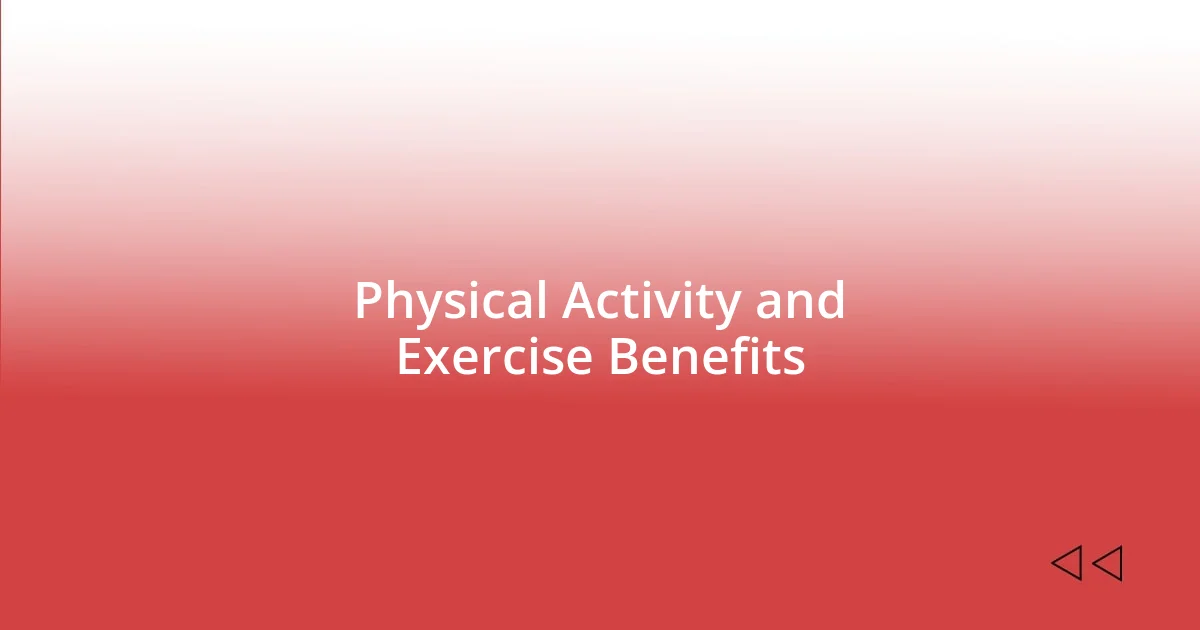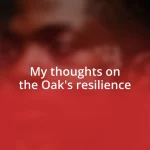Key takeaways:
- Combining various pain management techniques, such as mindfulness and physical therapies, can enhance overall wellbeing and effectiveness in handling pain.
- Tracking personal pain triggers and adopting lifestyle changes, like regular exercise and a healthy diet, empower individuals to take control of their pain management journey.
- Building a support network through friends, family, and support groups provides emotional relief and shared coping strategies that enhance resilience against pain.

Understanding Pain Management Techniques
Pain management techniques can vary widely, and understanding what works best for you is crucial to living a fulfilling life. I remember the first time I explored alternative therapies; I was skeptical yet curious. Could something as simple as mindfulness truly ease my discomfort? It turned out to be a game-changer for me, shifting my focus from the pain itself to a calmer mental state.
Moreover, I’ve found that combining various approaches often yields the best results. For example, I’ve paired physical therapy with acupuncture, and the synergy between them amazed me. Have you ever experienced a moment where two different methods complemented each other perfectly, enhancing your overall wellbeing?
Lastly, it’s essential to consider the emotional aspect of pain management. I often reflect on how my mental state can significantly affect my pain perception. On particularly tough days, I ask myself, “What small step can I take right now to feel better?” Whether it’s indulging in my favorite hobby or simply taking a moment to breathe deeply, these small choices can have a profound impact on how I manage my pain.

Identifying Personal Pain Triggers
Identifying personal pain triggers is a crucial step in managing pain effectively. I vividly recall a time when I began tracking my daily activities and noticed a pattern—certain movements or even stress from work often set off my discomfort. It was like piecing together a puzzle; once I recognized the triggers, I could adjust my routine to minimize their impact. Do you ever notice how a specific situation tends to ramp up your pain?
I also found that emotional states can play a significant role. For instance, during times of anxiety, I often experienced increased pain levels. In moments of high stress, I now consciously remind myself to employ relaxation techniques. I can’t tell you how transformative it has been to take that step back and practice grounding exercises. It’s almost like hitting a reset button for my body.
Tracking your pain triggers can also be empowering. I started using a simple app to log my pain intensity alongside daily activities and feelings. This habit not only helped me pinpoint what exacerbated my discomfort but also allowed me to celebrate small victories over time. Have you considered documenting your own experiences? It can lead to enlightening discoveries about your unique triggers.
| Pain Trigger | Impact on Pain |
|---|---|
| Physical Activity | Increased discomfort, particularly with repetitive motions |
| Stress Levels | Heightened pain perception, especially during high anxiety |
| Weather Changes | Exacerbation of symptoms, particularly in colder conditions |

Lifestyle Changes for Pain Relief
Lifestyle Changes for Pain Relief
Integrating lifestyle changes into my daily routine has been profoundly impactful on my pain management. I have come to appreciate the power of regular exercise, even when my body doesn’t feel like it. I recall a day when I was feeling particularly stiff, and I pushed myself to take a short walk. Surprisingly, that little bit of movement not only loosened up my muscles but also lifted my spirits significantly. It’s incredible how a bit of fresh air can become a small victory against pain.
In addition to exercise, I’ve adjusted my diet to include anti-inflammatory foods. Over time, I’ve noticed that incorporating more fruits, vegetables, and omega-3 fatty acids has made my body feel lighter and more energetic. The connection between diet and pain relief became clearer when I tried eliminating processed sugars and found that my fatigue diminished. Simple changes can often make a sizable difference.
- Regular physical activity, such as walking or swimming, helps reduce stiffness.
- Incorporating anti-inflammatory foods like berries, leafy greens, and fatty fish contributes to overall wellness.
- Practicing mindfulness and meditation can lower stress levels and, in turn, minimize pain perception.
- Optimizing sleep hygiene may enhance recovery, making it easier to face daily challenges.
- Staying hydrated is essential; even mild dehydration can aggravate pain.

Mindfulness and Relaxation Methods
Finding balance through mindfulness and relaxation methods has been a game changer for me. I often practice deep breathing exercises when I feel my tension rising. It’s astonishing how just a few moments focused on my breath can shift my entire state of being. Have you ever tried to sit quietly and just pay attention to your breathing? It feels almost liberating.
I also lean heavily on guided meditation. I remember the first time I used a helpful app—I was skeptical about sitting still for so long, but within minutes, I felt the tightness in my muscles ease. That space to just be, without judgment or pressure, creates a sense of peace that ripples through my day. It’s like a mini retreat I can access anywhere. Have you experienced a moment of stillness that brought you clarity?
Yoga has woven itself into my routine as well, blending movement with mindfulness. On days when my body feels especially heavy, I turn to gentle stretches. It often amazes me how something so simple can dissolve a portion of the pain I carry. Each stretch feels like a dialogue with my body—what better way to honor your own experience? In those quiet moments, I often discover that listening can be just as essential as any action I might take.

Physical Activity and Exercise Benefits
My experience with physical activity and exercise has proven to be a key player in managing my pain. I remember a particularly challenging period when even simple movements felt like a huge task; however, pushing through and joining a local swimming group made a remarkable difference. The buoyancy of the water not only eased my joints but also brought a refreshing sense of freedom that I hadn’t felt in ages. Isn’t it curious how something as basic as splashing around can turn into a form of therapy?
Engaging in regular, low-impact exercise has become my go-to remedy. Activities like brisk walking or gentle cycling help me fend off stiffness, especially on days when I feel the weight of discomfort pressing down. I find that these moments of movement often lead to unexpected bursts of energy that replace the fatigue I initially feel. It raises the question: what if we could harness that little “runner’s high” from simply standing up and moving around during the day?
Another aspect I’ve noticed is the mental clarity that follows a good workout. After a session of yoga, where I focused on my breath and aligned my movements, I often feel a rush of clarity and relief wash over me. It’s like hitting the reset button, reminding me that my body can be both capable and resilient. Experience tells me that a consistent routine doesn’t just soothe my muscles; it also nurtures a more positive outlook, transforming my perspective on pain management as a whole. How do you feel when you take that first step towards movement? Are you ready to discover the benefits waiting for you?

Alternative Therapies for Pain
Alternative therapies have often provided me with a refreshing shift in my pain management journey. I’ve dabbled in acupuncture, where fine needles are artfully placed at specific points on the body. The first time I tried it, I was surprised—it felt like a gentle wave washing over me. It’s incredible how this ancient practice can help restore balance and, surprisingly, diminish pain. Have you ever wondered about the connection between our body’s energy and how we feel?
Another interesting avenue I’ve explored is aromatherapy. I vividly recall the first time I inhaled lavender oil while feeling particularly tense. The soothing scent enveloped me and almost instantly changed my mood. I keep a small bottle handy and use it during moments when I need not only physical relief but also emotional soothing. It’s fascinating how our sense of smell can play such a pivotal role in pain management. Have you found scents that speak to you in a similar way?
Finally, I always keep an open mind about the power of sound therapy. There are times when I play soft, melodic music or utilize sound bowls during my relaxation sessions. When I close my eyes, I am often transported to a space where the pain seems to fade into the background. It’s like the sound wraps around my discomfort, transforming it into something more manageable. How do you react to different sounds when you’re in pain? Exploring these alternative therapies has not only brought me relief but has also deepened my understanding of the connections between body and mind.

Building a Support Network
Building a support network has been a cornerstone in my journey toward effective pain management. I still remember the moment I decided to share my struggles with a close friend. It was a relief to finally unload the heavy burden I had been carrying alone. Just having someone listen made me realize I wasn’t navigating this path in solitude. Have you considered who might be your sounding board during difficult times?
As I continued to seek support, I joined a local pain management group. The experience was enlightening. Sharing stories with others who truly understood my challenges created a sense of camaraderie that was both comforting and empowering. One evening, we sat in a circle exchanging coping tactics, and I discovered new tools that have since become invaluable. It made me wonder: what new perspectives can we gain when we connect with others who share our struggles?
I’ve also found that reaching out to family members for emotional support can uplift my spirits tremendously. One particular day stands out; I called my sister who, despite the distance, made me feel understood and loved during a particularly tough flare-up. Hearing her voice filled with compassion reminded me of the importance of nurturing these relationships. So, don’t hesitate to open up—who knows the strength you could find in your circle of loved ones?















